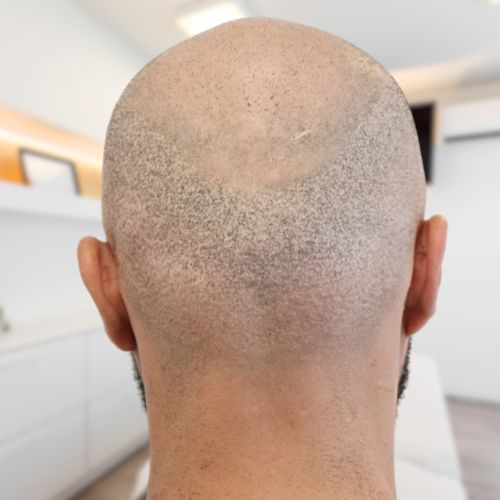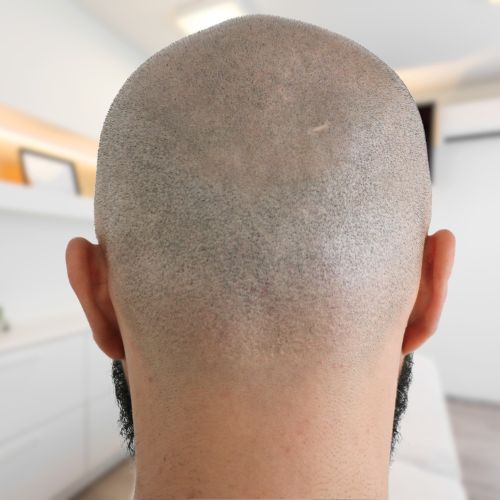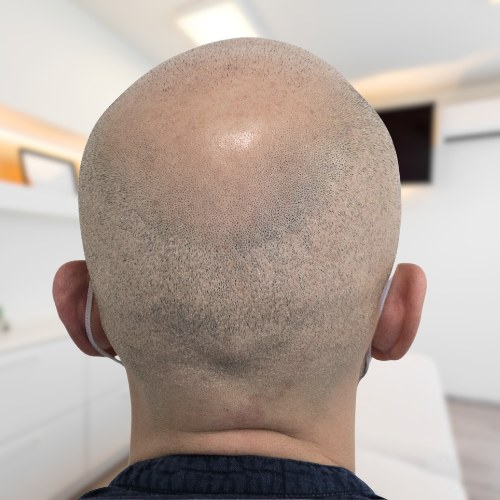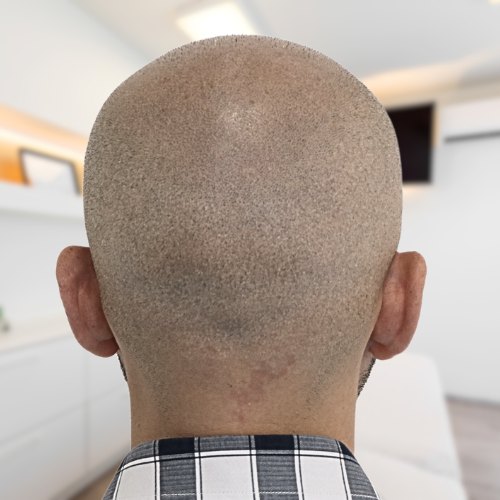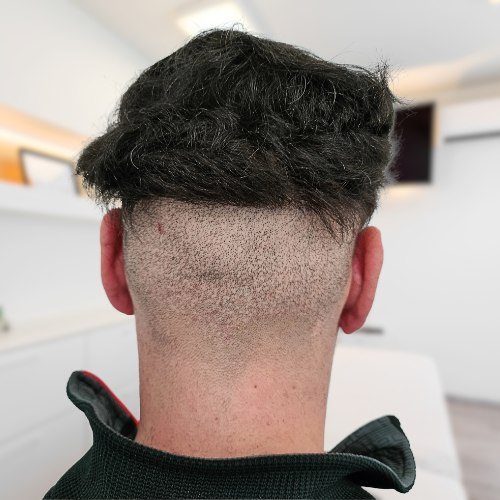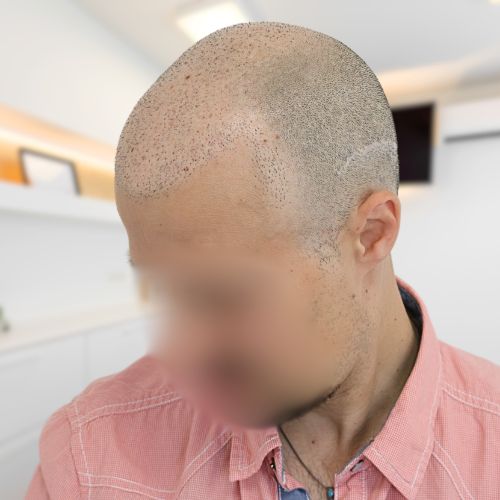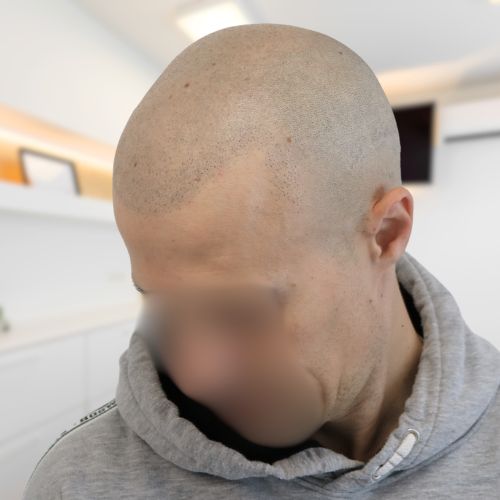Hair transplant failed? Recover treatment without surgery
Non-surgical solution after failed hair transplant.
- A failed hair transplant often cannot be resolved by a follow-up hair transplant.
- Sometimes there are also scars visible after an FUE hair transplant or after an FUT hair transplant.
- Often, the achieved density after a hair transplant is too low.
Thanks to micro hair pigmentation, a solution is possible (and also recommended by doctors).
Micro hair pigmentation (MHP) can help improve the result of a failed hair transplant by increasing the optical density or by camouflaging the resulting scars.
Micro hair pigmentation example: FUE scar + implantation camouflage
Camouflaging FUE hair transplant donor area scars
Donor area FUE hair transplant scars can be almost completely camouflaged in most cases thanks to micro hair pigmentation.
- The small white FUE dots (mini scars) are filled in with hair pigments resembling stubble. This makes it possible to wear short hair.
- This absorbs the reflection of the reflected light, creating an optical illusion of stubble.
- This softens the overall thinning of the donor area so that the optical hair density in the donor area is restored.
- With most clients, we see an optical improvement of 50-80%.
Micro hair pigmentation example: FUE hair transplant donor area scars camouflage
Micro hair pigmentation example: FUE hair transplant donor area scars camouflage
Camouflaging unnatural-looking hair transplant results
When the result of a hair transplant looks unnatural (see example below), this can be almost completely camouflaged in most cases thanks to micro hair pigmentation.
- Usually, after a poorly performed hair transplant, there are no other options than to completely shave the hair and create a short shaved hairstyle using micro hair pigmentation.
- By pigmentation thousands of virtual stubbles, the unnatural-looking transplants will be completely or almost completely camouflaged.
- With most clients, we see an optical improvement of 80-95%.
Micro hair pigmentation example: FUE hair transplant implantation area + FUT scar camouflage
Please note: Correcting hair transplant results is particularly intensive and requires a lot of experience.
5 Most common causes of a failed hair transplant:
- Incorrect manipulation of the hair by the doctor or assistants.
- Too much scar tissue due to lack of experience or wrong choice of instruments.
- The hair implants were not placed correctly (too deep, too shallow, poor manipulation, wrong instruments).
- The hair density is not uniform everywhere (usually due to the inexperience of the doctor).
- Incorrect or insufficient aftercare by the patient.
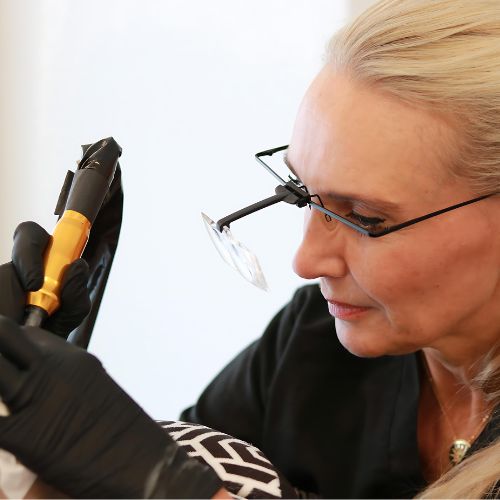
- Hair transplant repair
Submit price request based on images
